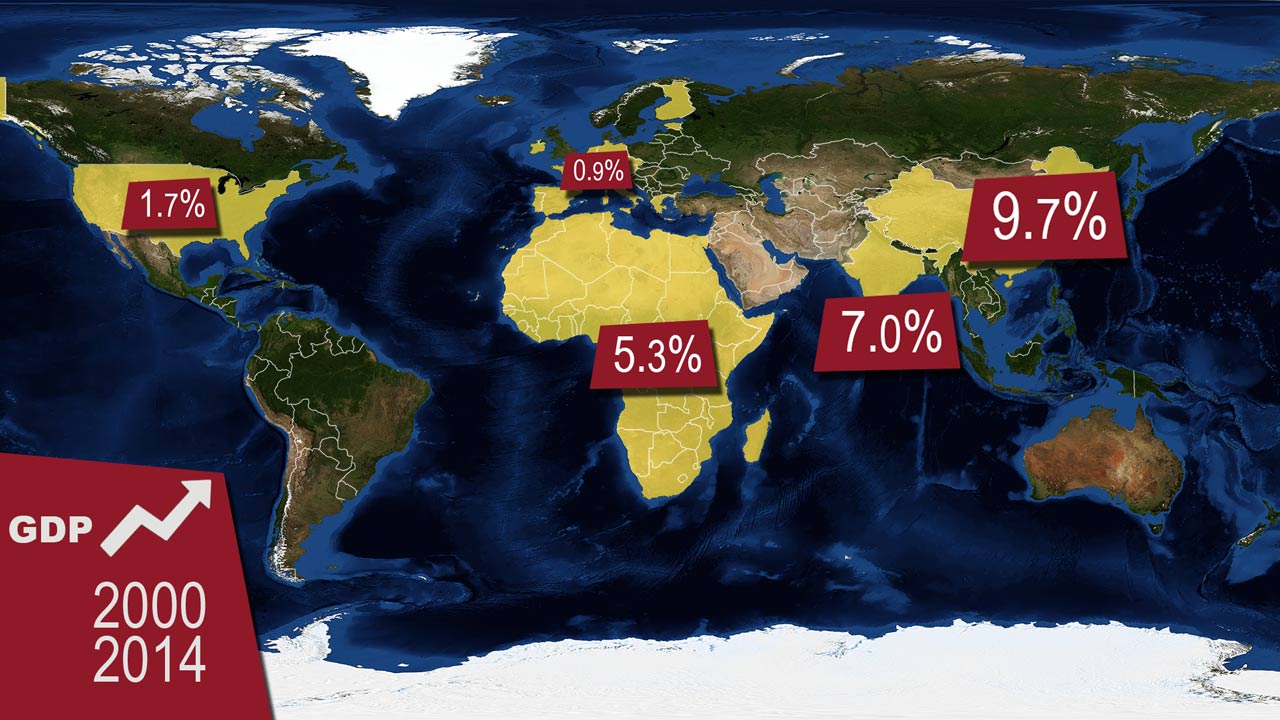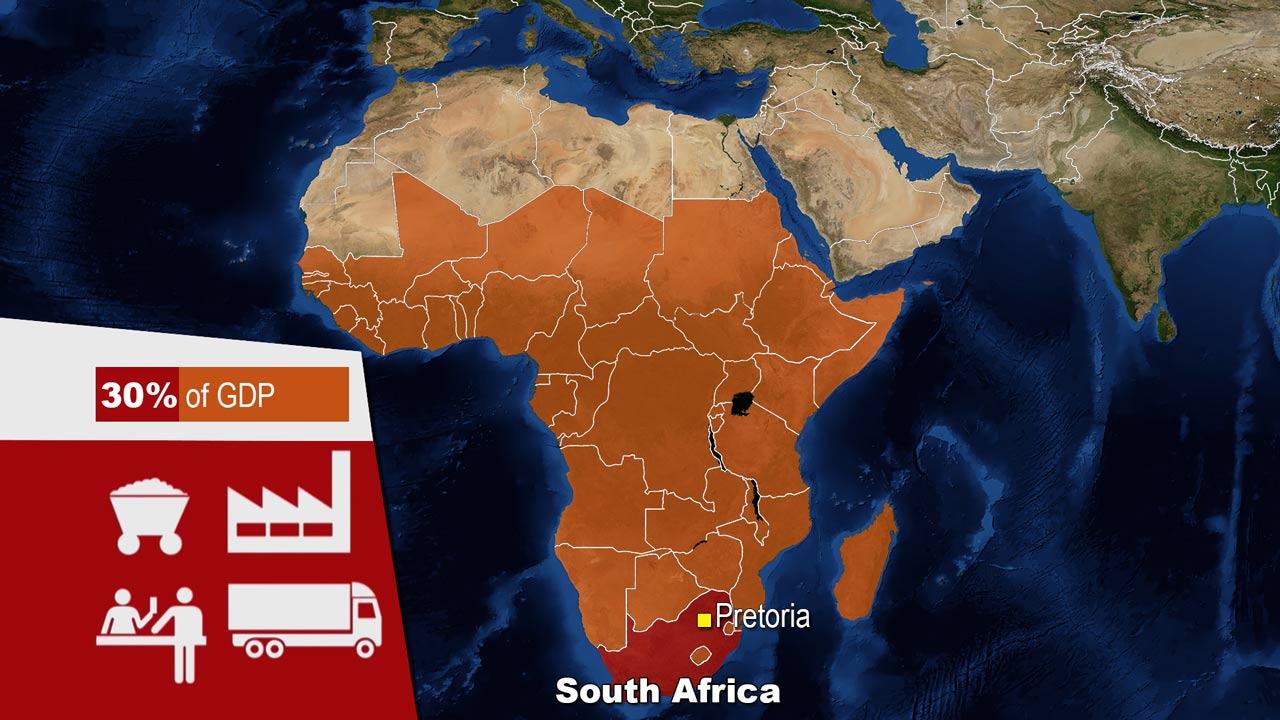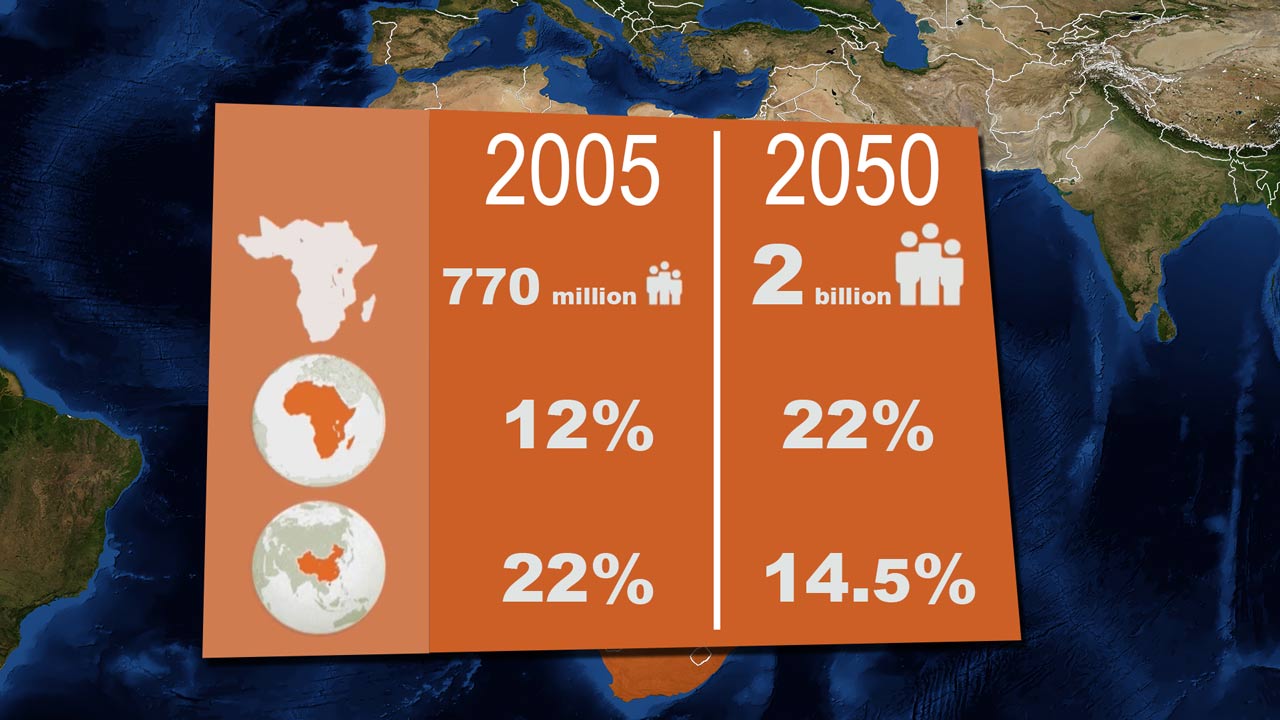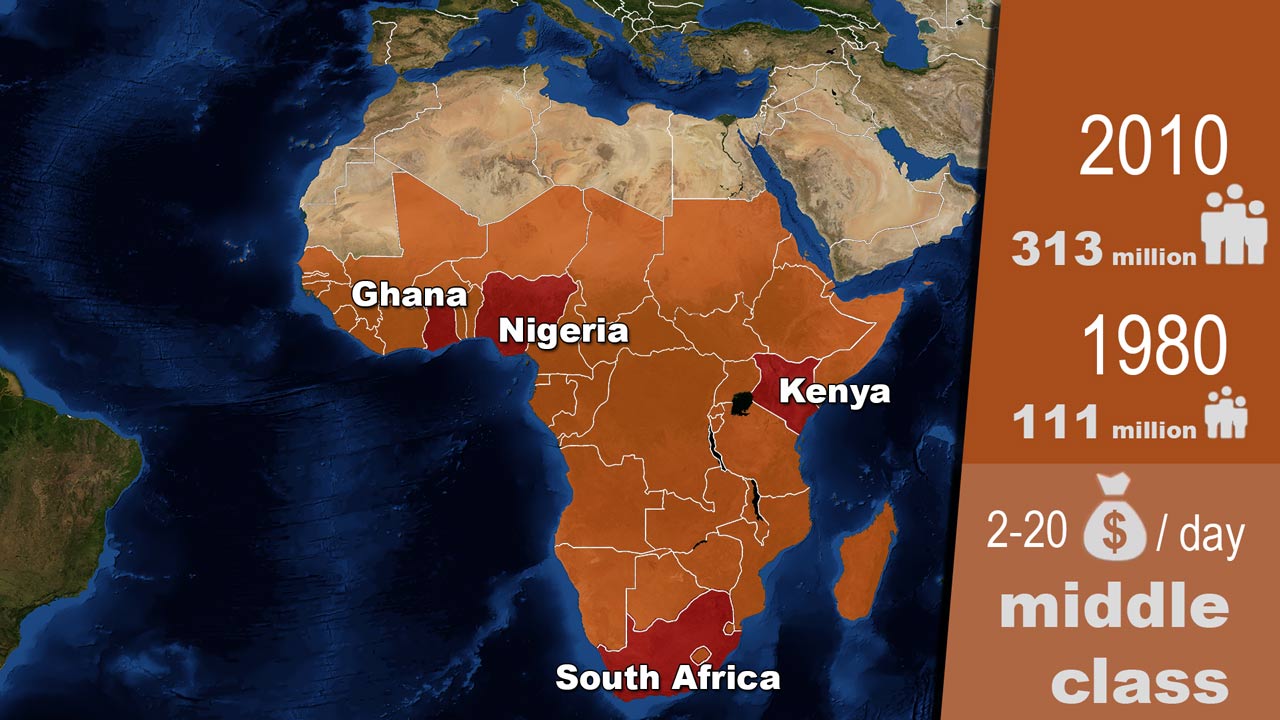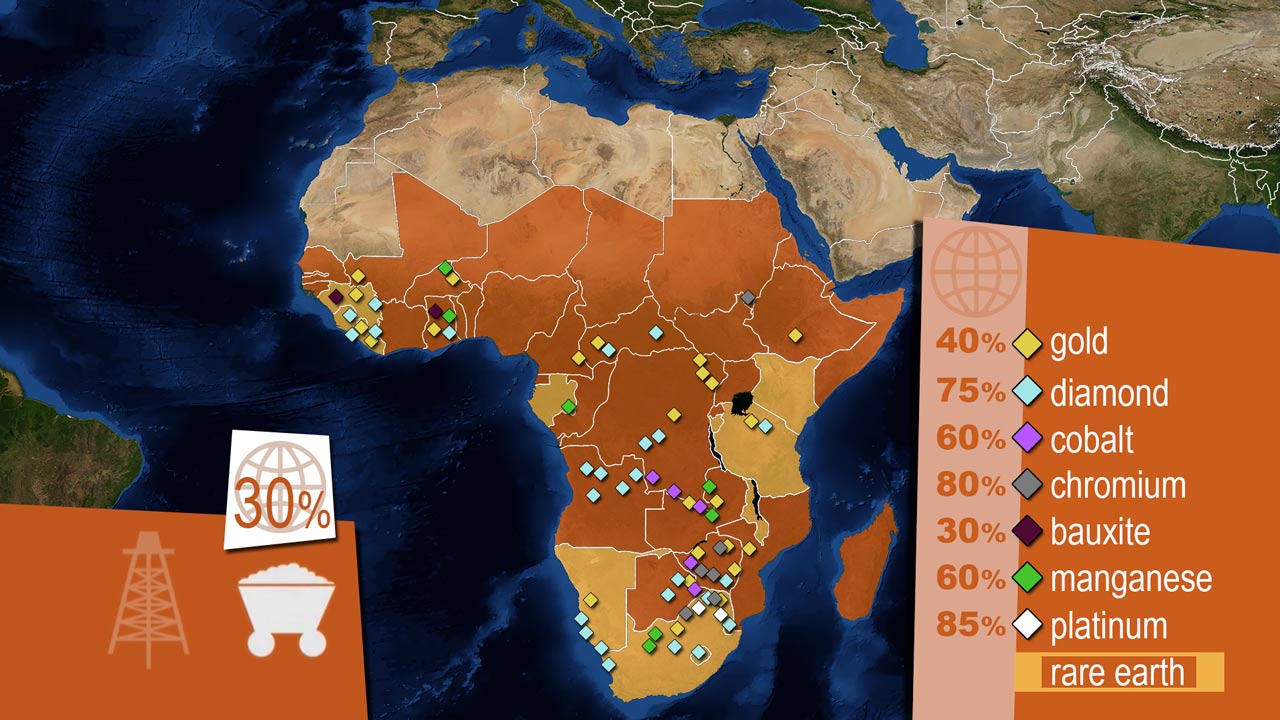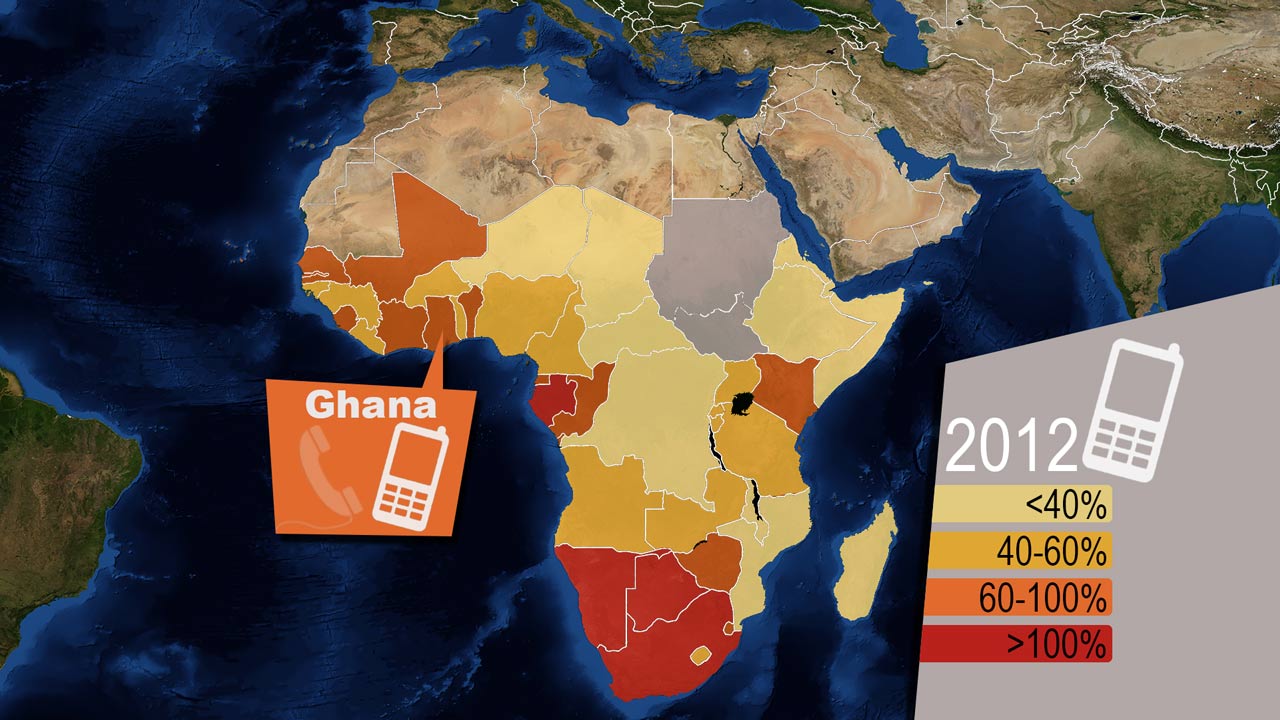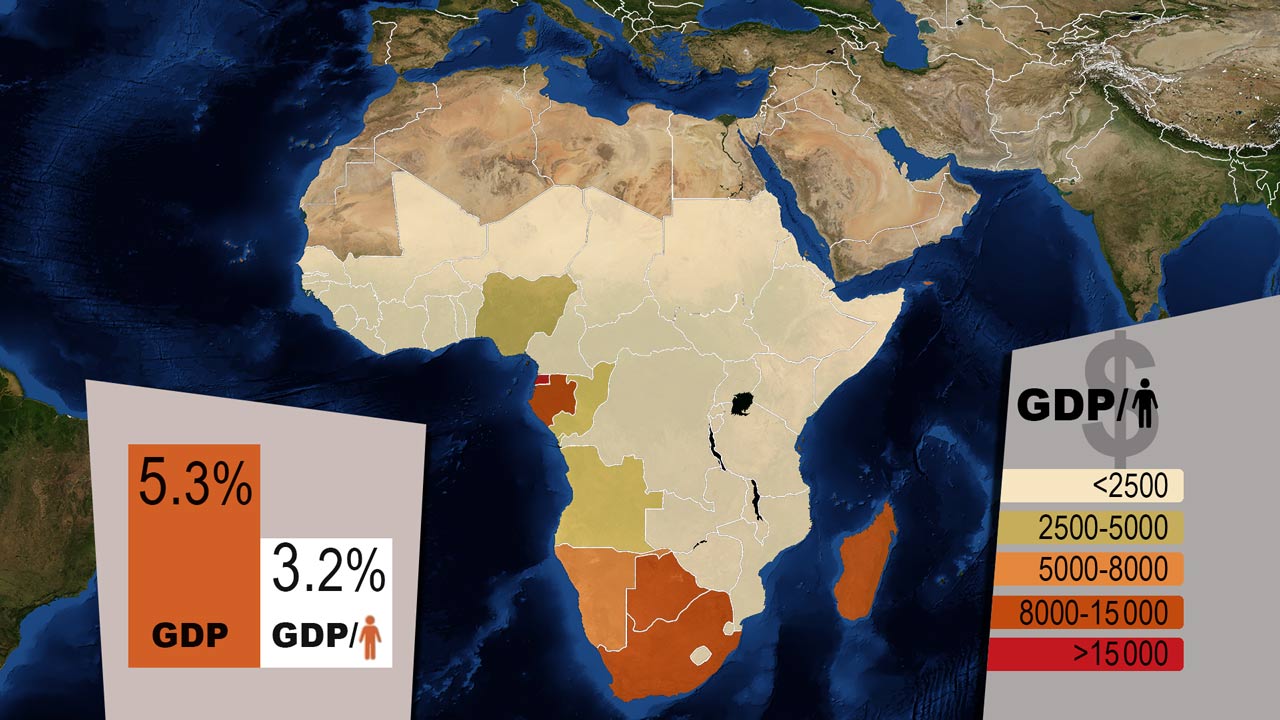Africa is in a state of flux and I like to report which changes are going on in Africa. Many people have a gridlocked opinion about that continent and I show you that Africa has more to offer as a new emerging market.
Africa’s economic growth between 2000 and 2014
2000 and 2014 increased Africa’s gross domestic product (GDP) yearly by 5.3% on average.
For comparison: The economic growth between 2000 and 2014 was on average 1.7% in the United States and 0.9% in the Eurozone. In the other large emerging markets: 7% in India and 9.7% in China. These numbers are maybe impressive, but you shouldn’t confuse economic growth with economic development.
South Africa is the biggest national economy in Africa
We should have a separated look at the regions north and south of the Sahara. In the countries north of the Sahara stagnates the economy, because of the Arab Spring amongst other things.
We concentrate on the countries south of the Sahara today, the so called Sub-Saharan Africa.
Africa is the largest national economy in that Region. It has large natural resources, a working industry, a financial service sector and a widespread transport infrastructure. South Africa stands for 30% of the GDP in that region.
Is Sub-Saharan Africa a new growth engine for the global economy?
According to the International Monetary Fund (IMF) is Sub-Saharan Africa going to grow by 4.9% in 2015. The region could become a new growth engine for the global economy, just like China and India. But where does this growth come from?
Increasing labor force
An important reason is the rapid population growth. In the year 2005 lived 770 million people south of the Sahara. In the year 2050 could already 2 billion people live in this region. In 2005 lived 12% of the global working population in Sub-Saharan Africa, until 2050 could this amount increase to 22%. In China lived 22% of the global working population in 2005 and this number is likely to be 14.5% in 2050.
Urbanization
In the countries south of the Sahara live most people in big cities. In the year 2010 lived in every of the pictured cities more than 2 million people. Kinshasa, the capital of the Democratic Republic of the Congo, and Lagos in Nigeria are the two biggest cities in the region. The population of Kinshasa is going to increase from 9 million in the year 2010 to 15 million in the year 2025. In Lagos is the population likely to increase from 10.5 million to 15.8 million people in the year 2025. Then are those the two biggest cities in Africa, even bigger than Cairo in Egypt.
50% of Africa’s population is going to live in big cities until 2030. Africa has a rapidly growing population, which is young and lives in urban centers. This also explains the dynamic of the domestic market.
Rise of the middle class
To this adds the rise of Africa’s middle class. In 1980 belonged 111 million people to the middle class, 30 years later, in the year 2010 increased this number to 313 million people. That is a third of the total population. The middle class increases fast in the countries Ghana, Nigeria, Kenya and South Africa. The middle class in Africa can spend between $2 and $20 per day. This leads to the development of an own African capitalism, which includes own capital investments.
Foreign direct investments
Foreign direct investments also have an impact on Africa’s economic growth. In 2011 had those investments the height of $37 billion, compared to $115 billion invested in China. The most important destination countries are Nigeria, Ghana and the Republic of Congo, where investments in oil production are made, plus South Africa of course, the biggest national economy in Africa. Most investments are made in the extraction of raw materials, especially in petroleum. 5% of the global oil deposits can be found in the countries south of the Sahara. But investments are also made in mining.
Mineral resources
30% of the global mineral resources can be found in Africa, to be exact:
- 40% of gold,
- 75% of diamonds,
- 60% of cobalt, especially in the Republic of Congo,
- 80% of chromium,
- 30% of bauxite, especially in Guinea,
- 60% of manganese,
- And 85% of platinum, especially in South Africa
Additional to that can large deposits of rare earth elements be found in Africa.
Increasing number of cellphones in Africa
Foreign direct investments also target at other sectors: electric power generation, real estate, retail, industry, and telecommunication.
On our map can you see now the spread of cellphones in Africa in the year 2012. In Ghana for instance existed at the end of the 90s, only 50.000 fixed phone lines on 20 million people. Meanwhile have 75% of citizen a cellphone. In the whole Sub-Saharan area had 65% of the people a cellphone in the year 2013.
This mobile boom results in economic changes: the people can make payments in regions where almost no banks exist. And farmers have access to information about commodity markets, which helps them in negotiations with middlemen.
The Gross Domestic Product (GDP) per capita
As you have seen profits the countries south of the Sahara by many factors. But reduces poverty at the same speed? The GDP growth in the region was 5.3 % yearly on average between 2000 and 2014, but the GDP per capita increased much slower, only by 3.2% each year. Let’s have a closer look to that.
According to the United Nations was Ethiopia’s GDP per capita with $354 the third lowest worldwide in 2013, although Ethiopia’s economy booms through its export of coffee and gold.
Nigeria could replace South Africa as strongest regional economic power, but it’s GDP per capita was only $2966 in 2013.
Africa’s countries with large mineral deposits welcome foreign companies with open arms. Thereby grows the economy, but the benefit for the population is usually low. Chinese companies for instance often bring their own workers along to Africa.
So decreased poverty in Africa less than in other regions. 30% of all persons who live in poverty live in the countries south of the Sahara. In the year 1980 was this number only 9%.
